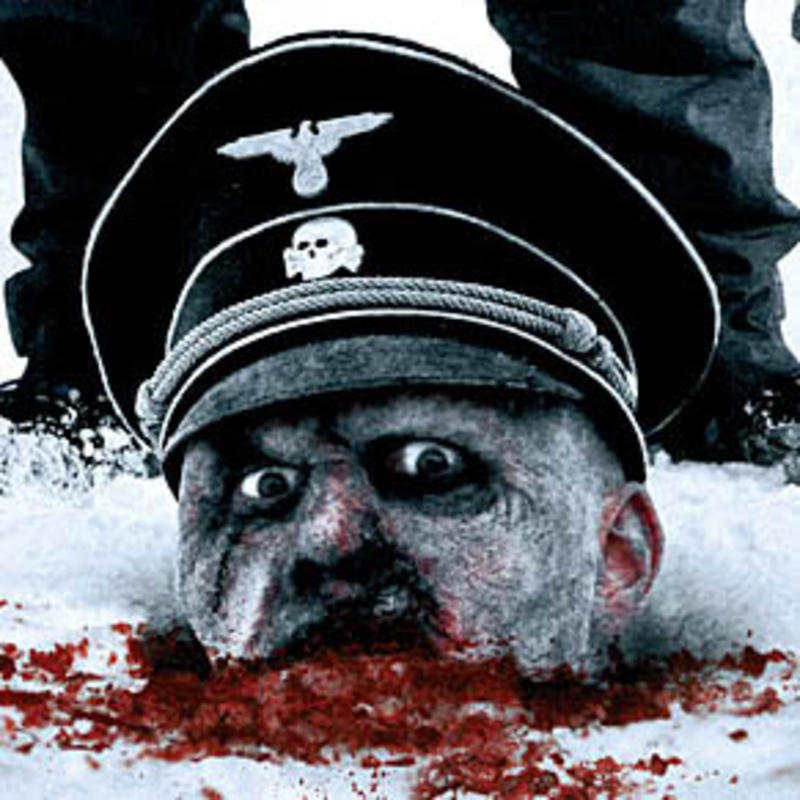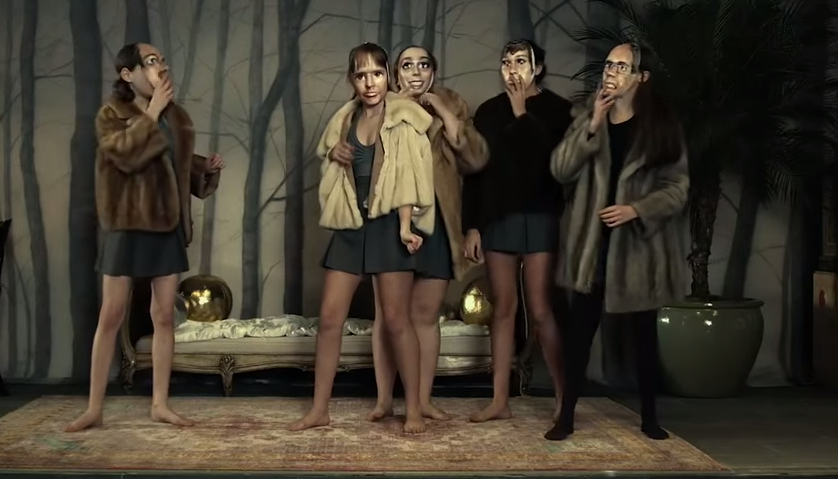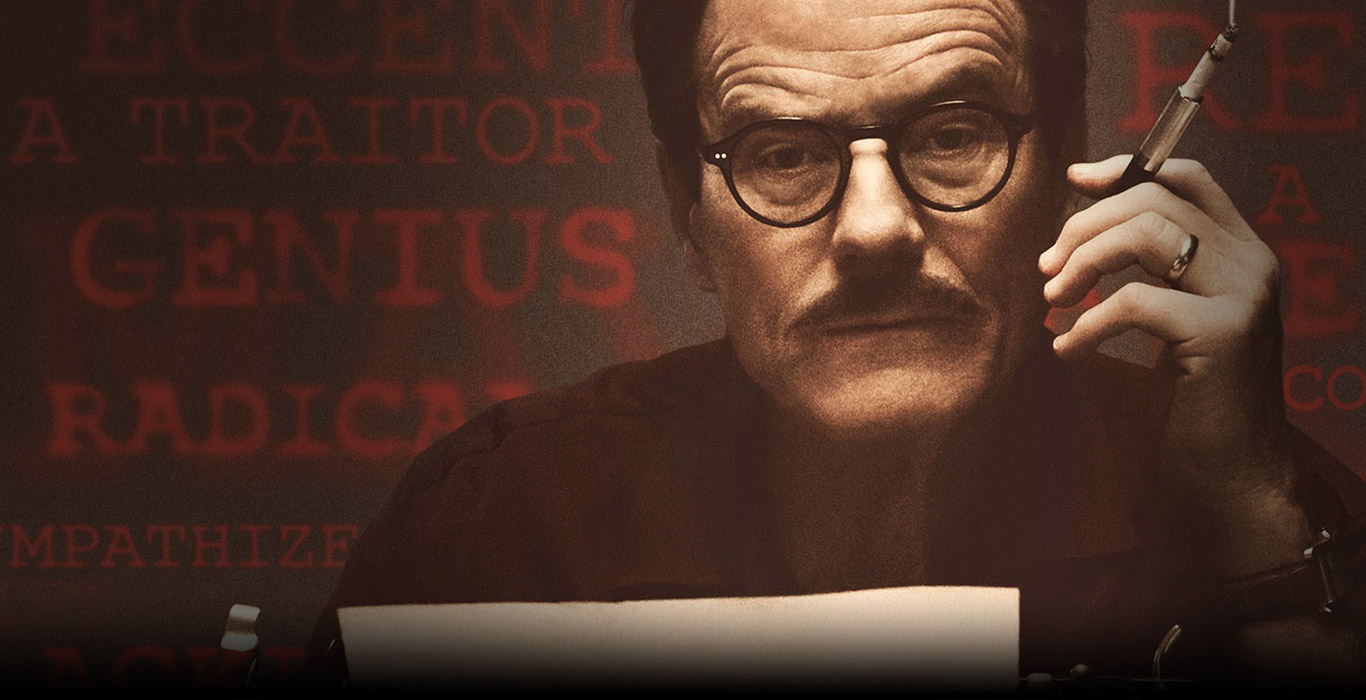Why radio station horror? Because George is a radio DJ and Hope is in the mood to scare him.
You might be surprised by how many films use the idea of a radio station DJ for horror. Most of these films are not very good – Dead Air, The Severed Arm, Bad Channels, yes, even Rob Zombie’s Lords of Salem. Not good. But other films manage to mine the public exposure and personal vulnerability of an on air DJ to excellent effect, generating an anxious terror that can fuel a whole film. Here are our five personal favorites.
5. A Christmas Horror Story (2015)
A trio of Canadian directors – Steve Hoban, Brett Sullivan, and Grant Harvey – pull together a series of holiday shorts with this one. Held together by Dangerous Dan (William Shatner), the small town radio announcer who’s pulling a double shift this Christmas Eve, the tales vary wickedly from three teens trapped in their own wrong-headed Nativity, to a family who accidentally brought home a violent changeling with their pilfered Christmas tree, to a dysfunctional family stalked by Krampus, to Santa himself, besieged by zombie elves.
Yes, there is a second film out this holiday season with Krampus in it. You know what? This one’s better – in fact, it’s almost patterned after Krampus director John Dougherty’s cult favorite Trick r’Treat and it offers more laughs and more scares.
Plus Shatner! He’s adorably jolly in the broadcast booth, particularly as the evening progresses and his nog to liquor ratio slowly changes. This is a cleverly written film, well-acted and sometimes creepy as hell. Merry f’ing Christmas!
4. The Fog (1980)
Stevie Wayne (director John Carpenter favorite, at least while they were married, Adrienne Barbeau) does an air shift from a studio in that old lighthouse out on Antonio Bay. But the fog rolling in off the bay is just too thick tonight. It’s as if she’s entirely alone in the world. Can anyone hear her? Will someone go check on her young son?
While a lot does not work in Carpenter’s pirate leper ghost story (leper pirates?!), his first theatrical release after Halloween does hit some of the right marks. The vulnerability of a radio DJ – totally isolated while simultaneously exposed – has never been more palpable than in this film.
Jamie Lee Curtis (another Carpenter favorite) joins her mom Janet Leigh and B-horror legend Tom Atkins to fill out the pool of leper pirate bait. While the film is hardly one of Carpenter’s best, his knack for framing, his voyeuristic camera, and his ability to generate scares with a meager budget are on full display.
3. Pontypool
Canadian director Bruce McDonald’s shock jock horror film is best appreciated as a metaphor on journalistic responsibility and the damage that words can do. Radio air personality and general pot-stirrer Grant Mazzy (Stephen McHattie) finds himself kicked out of yet another large market and licking his wounds in the small time – Pontypool, Ontario, to be exact. But he’s about to find himself at the epicenter of a national emergency.
McDonald uses sound design and the cramped, claustrophobic space of the radio studio to wondrous effect as Mazzy and his producers broadcast through some kind of zombie epidemic, with Mazzy goosing on the mayhem in the name of good radio. As he listens to callers describe the action, and then be eaten up within it, the veteran McHattie compels attention while McDonald tweaks tensions.
Shut up or die is the tagline for the film. Fitting, as it turns out that what’s poisoning the throng, turning them into mindless, violent zombies, are the very words spewing at them. It’s a clever premise effectively executed, and while McDonald owes debts all around to previous efforts, his vision is unique enough to stand out and relevant enough to leave an impression.
2. Texas Chainsaw Massacre 2 (1986)
Tobe Hooper himself revisited his southern cannibal clan 12 years later, the great Dennis Hopper in tow. Hopper plays a retired Texas Marshall bent on finding the family that killed those kids back in the day. He joins forces with a radio host, played gamely by Caroline Williams. Together they flush the Sawyer (they have no family name in the first installment) family out of hiding. And just in case we’d missed how Leatherface got his name, the act of removing someone’s face to wear as a mask is revisited in a kind of weird wooing ritual.
TCM2 certainly gets weird, and boasts an unhinged performance by Hopper as a lawman willing to make some ugly choices to follow his obsession. Jim Siedow (The Cook) returns, and veteran genre favorite Bill Moseley adds a quirky ugliness to the proceedings. There’s also an awful lot of screaming, even for this kind of a film, but it’s a worthy genre flick. It pales in comparison to the original, but hold it up against any other low-rent horror output of 1986 and it’s a stand out.
1. Play Misty for Me (1971)
Clint Eastwood made his directorial debut with this cautionary tale. Free-wheeling bachelor and jazz radio DJ Dave Garver (Eastwood) picks up a fan (Julie Walter) in a local bar, but it turns out she’s an obsessive and dangerous nut job.
You can see this film all over later psycho girlfriend flicks, most notably Fatal Attraction, but it was groundbreaking at the time. To watch hard edged action hero Eastwood – in more of a quiet storm mode – visibly frightened by this woman was also a turning point. We’re told the shag haircut sported by Donna Mills also became quite the rage after the film debuted in ’71.
Eastwood capitalizes on something that all the rest of the films on this list pick up – that voice on the radio is actually a person who’s somewhat trapped. You can hear him, but you can’t necessarily help him. He’s both public and isolated. Eastwood’s slow boil direction and Walter’s eerie instability infuse the soft jazz sound with an undercurrent of danger that generates unease in every frame.
Listen to the whole podcast HERE.








